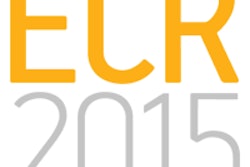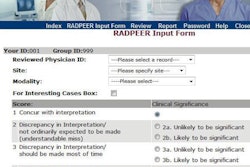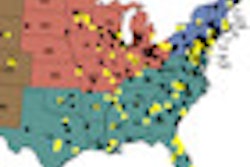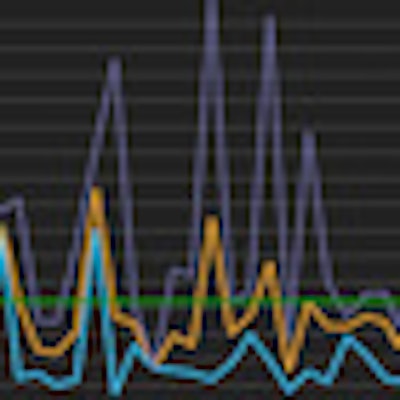
Radiation dose tracking can be time-consuming and expensive to implement. But a start-up firm called Scannerside aims to make that process easier with a Web-based service that can provide cumulative dose tracking for CT and angiography procedures for all types of medical imaging scanners.
Launched in July, the Stony Brook, NY-based firm's service employs a cloud-based analytics platform to provide dose tracking without software installation or RIS/PACS integration. As the procedure is being performed, technologists enter exam dose-length product (DLP) information on the Scannerside Web portal on a computer or iPad in the scanner room. Effective dose for the current exam and patient is then calculated, and a sheet or dose card that includes delivered and cumulative patient dose information is printed for the patient.
"The idea is to drop the technical barrier for institutions to [implement dose tracking] so that the institution will see it as an upgrade to their infrastructure," said Dr. William Moore, chief of thoracic imaging at Stony Brook University Medical Center. The software was developed at the university, which spun Scannerside out to commercialize the technology.
Other approaches to implementing radiation dose monitoring can be expensive, time-consuming, and involve IT-intensive processes. There's also risk involved with placing software that could hiccup on a PACS server, Moore said.
"We take that [risk] away from the equation," he said.
All data from a site are stored, encrypted, and processed in the cloud, according to the company. Monitoring of cumulative dose can also be tracked with real-time Web-based reports.
"Our concept is to be patient-centered, but at the same time, being in the room where the scan is being done to give real-time information," said Scannerside co-founder Dr. Ronak Talati, a radiologist and software coder at Stony Brook.
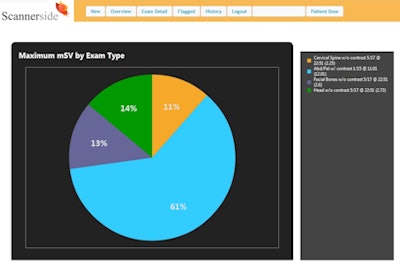 |
| Detailed tracking of patient dose by exam type. All images courtesy of Scannerside. |
If desired, dose information can also be entered into radiology reports and electronic medical records through automated and semiautomated technology. The portal works with any vendor's CT scanner or model.
By typing in the medical record number for an individual, a detailed analytic report will show the accumulated dose per patient. Real-time dose analytics also enables monitoring by scanner and exam type over time. Exam volume can also be tracked.
"This is all available at the side of the scanner, and because it's cloud-based and compatible with other devices, an administrator can also access it," Moore said.
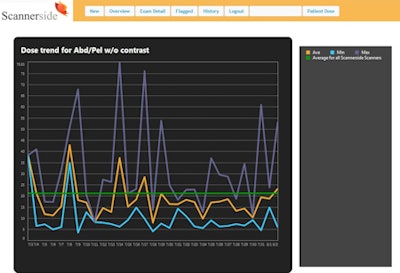 |
| Dose trends can be provided for specific exam types. |
The service has been a great facilitator for technologists using Scannerside, driving them to be very cognizant about radiating patients after adopting the service, Moore said.
"We didn't expect that to happen, but techs have been really proactive once they understand how much dose they are giving out," he said. "The graphics, plus ... feedback on how much the patients are getting, that's amazingly empowering for techs."
Scannerside also offers a DICOM "listener" tool, which grabs dose information from older CT scanners that do not report dose data as part of the DICOM header.
"The analytics is exactly the same, whether it's a listener or tech-entered dose data, and the patient essentially gets the same printout," Talati said.
In the future, the company plans to add support for mammography, nuclear medicine, and radiography dose reporting and tracking.
Scannerside has installed the service at its luminary sites at Stony Brook Medical Center and John T. Mather Memorial Hospital. Final discussions are also under way with other sites in and outside of the U.S., Moore said.
The company is initially pursuing direct sales and is also open to relationships with OEMs and PACS companies, as well as dictation firms, he said.





